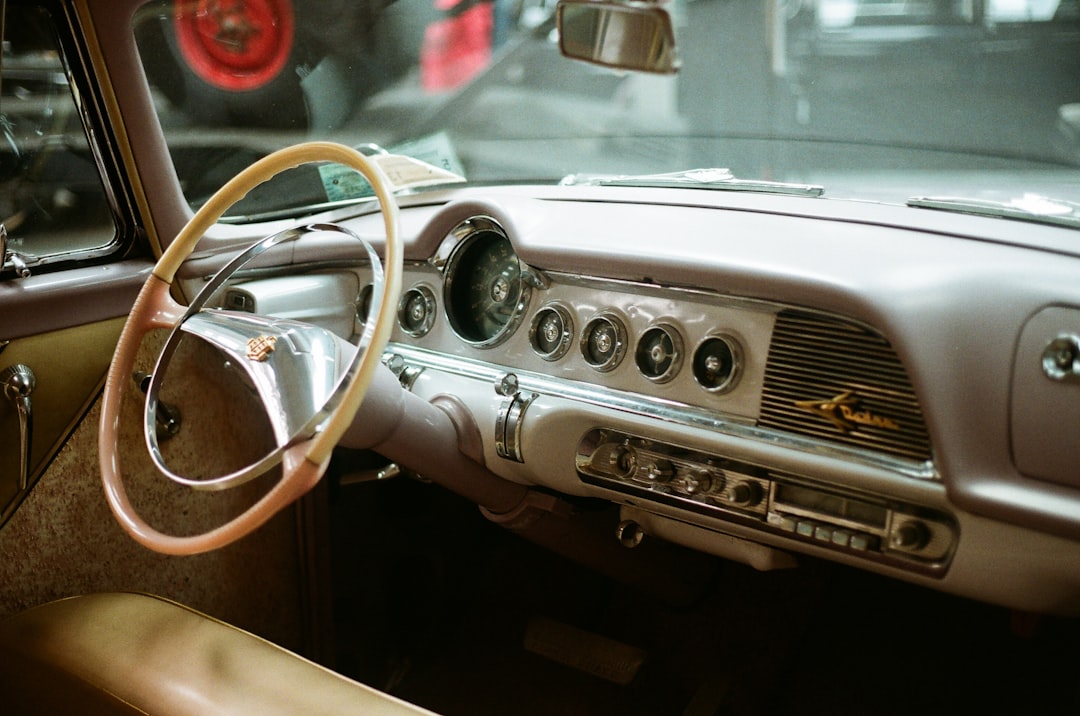As vehicle technology rapidly evolves, one often overlooked but essential component of driving ergonomics is the humble turn-signal stalk. While many newer cars have shifted toward button-based indicators or touch-sensitive interfaces, there is a growing community interested in retrofitting traditional turn-signal stalks into modern or specialty vehicles. The reasoning is often rooted in both usability and driver familiarity, as well as the aesthetic appeal of analog controls.
Why Consider a Turn-Signal Stalk Retrofit?
While digital and touch-responsive controls offer advanced customization, they frequently compromise on ease of use. Turn signals are one of the most commonly used controls in any vehicle, and drivers need to operate them quickly and often without looking. A physical stalk provides:
- Immediate tactile feedback that allows for blind operation
- Intuitive engagement based on years of driving habits
- Increased safety through reduced distraction
There is also the matter of user satisfaction. For purists and classic car enthusiasts, a retrofit preserves the driving experience in its most familiar form. Some premium automakers are even reintroducing stalks based on customer feedback showing dissatisfaction with touch controls.

Understanding Usability
Usability in automotive controls is dictated by three primary factors:
- Reachability: Can the driver activate the control easily without changing driving posture?
- Feedback: Is there a clear physical response indicating that the signal is on or off?
- Consistency: Does the control behave the same way every time it’s used?
Turn-signal stalks score high on all three counts. Located on either side of the steering column (usually left in the U.S.), the control mechanism is always in close proximity to the driver’s hands. Most stalks also provide a “click” or “snap” back into place, signifying their operation effectively without requiring the driver to divert attention.
Modern Interface Challenges
New infotainment-heavy automotive interiors often favor touch panels and minimalism. For better or worse, this shifts control schemes into menus or haptic panels. While this may streamline dashboards and reduce component complexity, it tends to downplay muscle memory and hands-on control. This can be problematic in split-second decision scenarios, such as lane changes or emergency maneuvers.
In contrast, a stalk remains fixed in purpose and position. This fixed-function design is superior in scenarios where decision-making speed and continuity are necessary. Common examples include:
- Signaling during high-speed overtakes on highways
- Managing quick lane navigation in urban areas
- Heavy traffic conditions where visual distractions must be minimized
Retrofitting: Is It Feasible?
While the idea of retrofitting a turn-signal stalk may seem daunting, it’s a feasible project for many car models and even custom builds. However, the complexity will depend on the car’s existing control systems. Older cars or vehicles with modular electronic control systems make the best candidates for stalk retrofits.
Here are the main components involved in such a project:
- Hardware Interface: The physical mount and lever assembly, often taken from donor vehicles
- Electronic Integration: Adapting the stalk’s wiring to be interpreted by the car’s turn-signal circuitry
- Steering Column Compatibility: Most stalks are positioned based on manufacturer specifications; adaptation may require custom brackets
- Controller Area Network (CAN) Integration: For modern vehicles, compatibility with onboard systems can be achieved using interface modules
Many enthusiasts also opt for integrating vintage stalks with LED indicators for a hybrid retro-modern aesthetic. Some EV conversion kits even allow optional stalk control modules to be added through standardized connector points.

Case Studies: Popular Retrofits
One of the most popular platforms for turn-signal stalk retrofits is the Tesla Model 3 and Model Y. After the automaker controversially removed stalks in recent updates, third-party vendors began offering kits to reintroduce physical stalks, citing improved usability and driver satisfaction.
Another common example is the restoration of classic cars being modified for everyday use. Enthusiasts often retrofit high-quality mechanical stalks sourced from donor luxury models like Mercedes-Benz or BMW. The reasoning? Despite modern gadgetry, these brands’ physical controls have earned reputations for reliability and tactile pleasure.
Usability Design Tips
When planning a retrofit, consider these tips to ensure optimal usability:
- Placement accuracy: Maintain the stalk’s distance and angle consistent with OEM designs.
- Tactile feel: Choose stalks with reliable detents and spring-back action.
- Signal duration: Ensure the stalk allows both sustained and “one-touch” signaling capabilities.
- Illumination: If your dashboard relies on touch indicators, be sure the retrofit integrates with dash lights effectively.
Pros and Cons of Turn-Signal Retrofits
Let’s weigh the benefits against potential challenges:
Pros:
- Intuitive and consistent user interface
- Aesthetic appeal for classic car purists
- Reliable mechanical operation, less prone to software glitches
- Reduced driver distraction compared to touch interfaces
Cons:
- Initial installation can be technically challenging
- May void warranty or require system bypasses
- Less compatibility with adaptive digital interfaces
- Possible legal implications if not road-certified in some regions
The Future of Stalk Controls
The ongoing tension between mechanical and digital interfaces reflects broader trends across automotive design. As fully autonomous cars emerge, some manufacturers argue that stalks — and even steering wheels — will eventually be obsolete. Still, until we reach full automation, the simplicity and reliability of stalk-based signaling will continue to appeal to many.
Interestingly, there’s a pushback forming in the consumer space. Drivers are looking beyond gimmicks, valuing functional design, and turning to companies that listen to the real-world needs of their users. In this sense, turn-signal stalks are more than just levers — they represent a philosophy of interface integrity.

Conclusion
While automotive trends may chase sleek, minimalist dashboards, the usability and consistency of traditional turn-signal stalks still reign supreme in many practical applications. Whether you’re restoring a classic car, enhancing your modern EV, or simply favoring function over fashion, turn-signal stalk retrofits offer a compelling blend of human-centered design and mechanical reliability.
In a world of digital overload, something as simple as a well-placed stalk can make all the difference. And in many cases, going back to basics might just be the most modern move of all.



